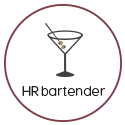Estimated reading time: 4 minutes
(Editor’s Note: Today’s article is brought to you by our friends at ADP, a comprehensive global provider of cloud-based human capital management solutions. Industry analyst firm Nelson Hall recently identified ADP as a leader in both the small and medium business as well as mid to large market segments. Congrats to them! Enjoy the read.)
I recently had an HR Bartender reader ask me about the topic of strategic compliance and how organizations should think about creating a strategic compliance strategy. It’s a great question. Compliance costs are often accepted as a cost of doing business without undergoing a lot of scrutiny unless or until a major compliance failure, or a series of smaller non-compliance issues, occur that puts the company at serious financial or reputational risk.
This is true regardless of the type of HR-related risks we’re talking about. Given the wide range of activities that HR is involved in, there is an equally wide range of activities that pose compliance risks, including:
- Employment tax compliance including tax credits and incentives
- Payroll processing including taxes, employee pay, wage statements, garnishments
- Employee wellbeing which as a financial component
- Affordable Care Act (ACA) compliance
- Employee fraud, sometimes referred to as “time theft”
- Unemployment claims
Organizations have an opportunity to achieve operational cost savings, reduce compliance risks, and receive deeper business insights by developing a strategic compliance strategy. Let’s talk about how HR leaders can deliver a compelling business case to executive leadership to invest in compliance process optimization that helps mitigate risk and reduce costs. It starts by shifting our views about compliance.
Strategic Compliance: More Than a Cost of Doing Business
The world of work is changing rapidly, and we’re seeing how some companies are struggling to keep up. Here are just a handful of business, cultural, political, and technological trends impacting employers and compliance today:
- New technologies including artificial intelligence (AI) and machine learning are creating new opportunities for innovation, along with issues and concerns for employers to consider.
- The emergence of the gig economy has redefined the make-up and expectations of workforces around the globe.
- New consumer trends impacting how employees are paid and how they manage their finances are shifting the compensation landscape.
With so much changing so quickly, it’s no wonder that, according to a 2020 survey conducted by the ADP Research Institute, 40% of all business owners surveyed indicated that they had experienced unintended expenses because of non-compliance with government regulation.
Using Technology to Mitigate Risk
Here’s the good news: despite increasing complexity, companies that use technology as part of their HR compliance strategy not only stay ahead of the curve in terms of managing compliance risk, but they can also significantly reduce operational costs and improve overall business efficiency and effectiveness. In a survey from KPMG, 67% of respondents said that technology would be integral to their compliance efforts.
As part of their strategic compliance strategy, companies invest in people and technology that will help them avoid or reduce unnecessary compliance risks. They do so with the assumption that their ongoing operational investments will be predictable and manageable and will far outweigh the unpredictable costs and business impacts associated with non-compliance.
You might be saying to yourself, “Sign me up! This sounds great.” And it is. But organizations do need to remind themselves of the pitfalls of complacency. As the ongoing costs of existing people, systems, and processes outweigh the impact of financial penalties and impacts to a company’s reputation, companies may be tempted to maintain the status quo.
Continuous analysis to identify hidden costs and illuminate hidden opportunities is what takes compliance from that “accepted” cost of doing business to “strategic strategy”. Organizations can use technology to access the right data and industry benchmarks. That access to timely, relevant data allows the organization to make the business case for change. It is equally impactful when it comes to realizing cost and efficiency improvements.
Strategic Alignment and Opportunity: Raising the HR Bar
In a recent Bloomberg HR department benchmark study, 38% of HR professionals said their use of metrics and analytics was adequate. Those who agreed that their usage of metrics and analytics was adequate reported notably higher levels of departmental efficiency, cost savings, and data-driven decision-making.
ADP has created a simple yet compelling, data-driven framework to help companies gather the data needed to present alternatives in support of their strategic compliance strategy. If you want to learn more, check out ADP’s Smarter Compliance site.
When HR teams can look beyond day-to-day operational activities and compliance responsibilities, they can focus more on identifying and capitalizing on opportunities to contribute to executive-level strategic business goals and to having a greater impact on employee recruitment, engagement, and retention. That’s where the organization wants them to be.
21









Trista Dazzel says
Enjoyed this read. I actually love working at ADP and helping clients use analytics to help them with their business decisions, so they can focus more on their most important asset ; their people.
Sharlyn Lauby says
Thanks for the comment Trista!